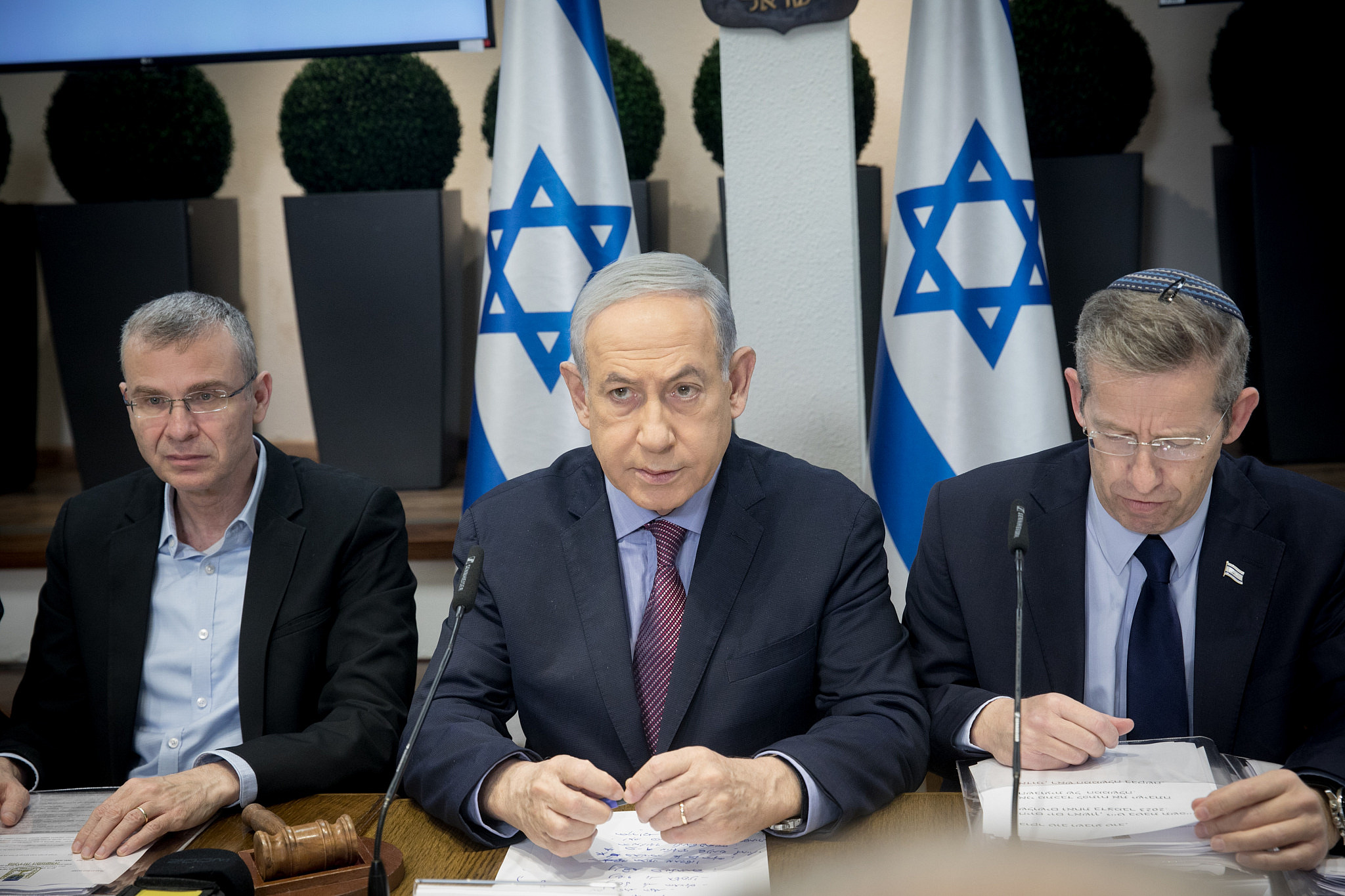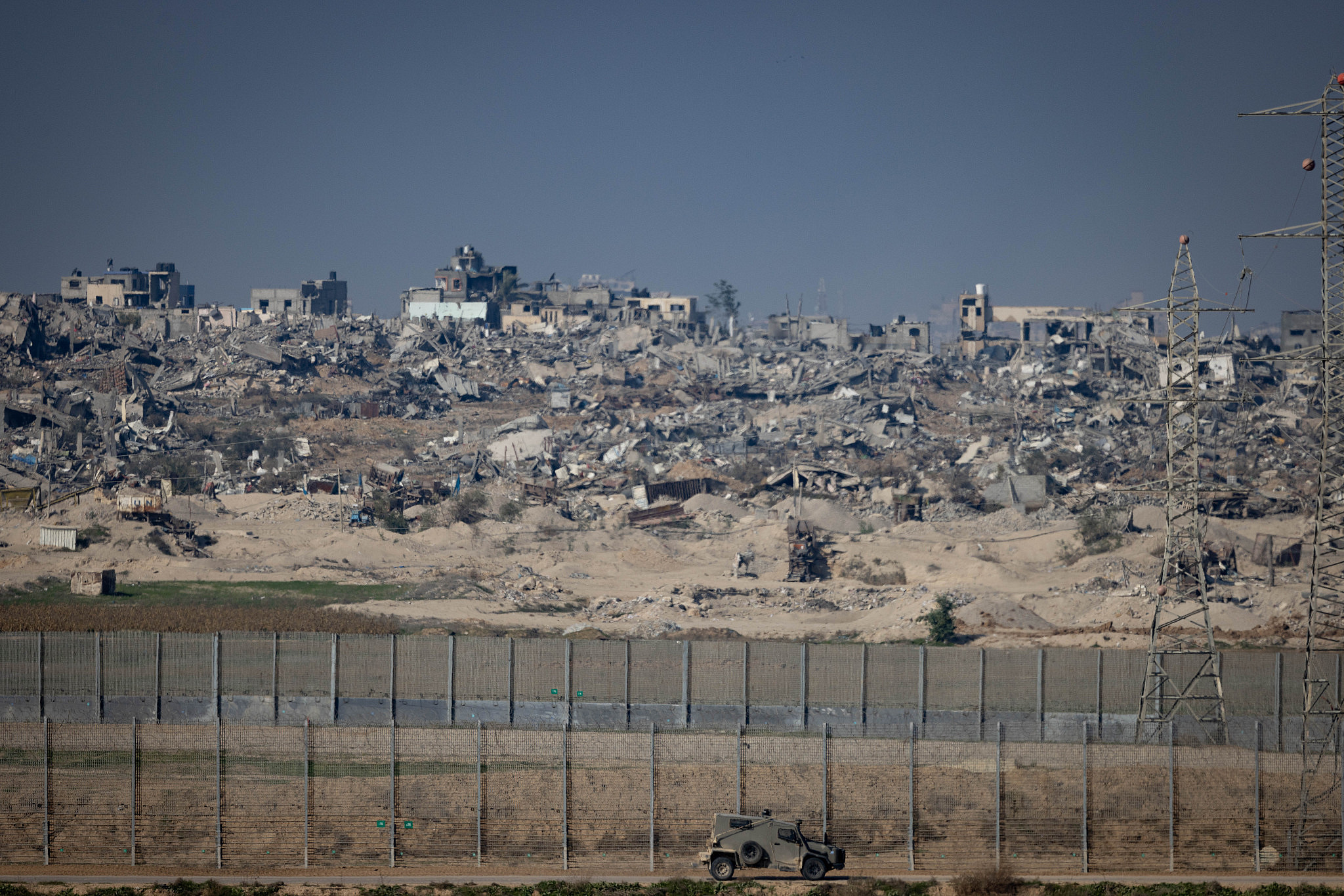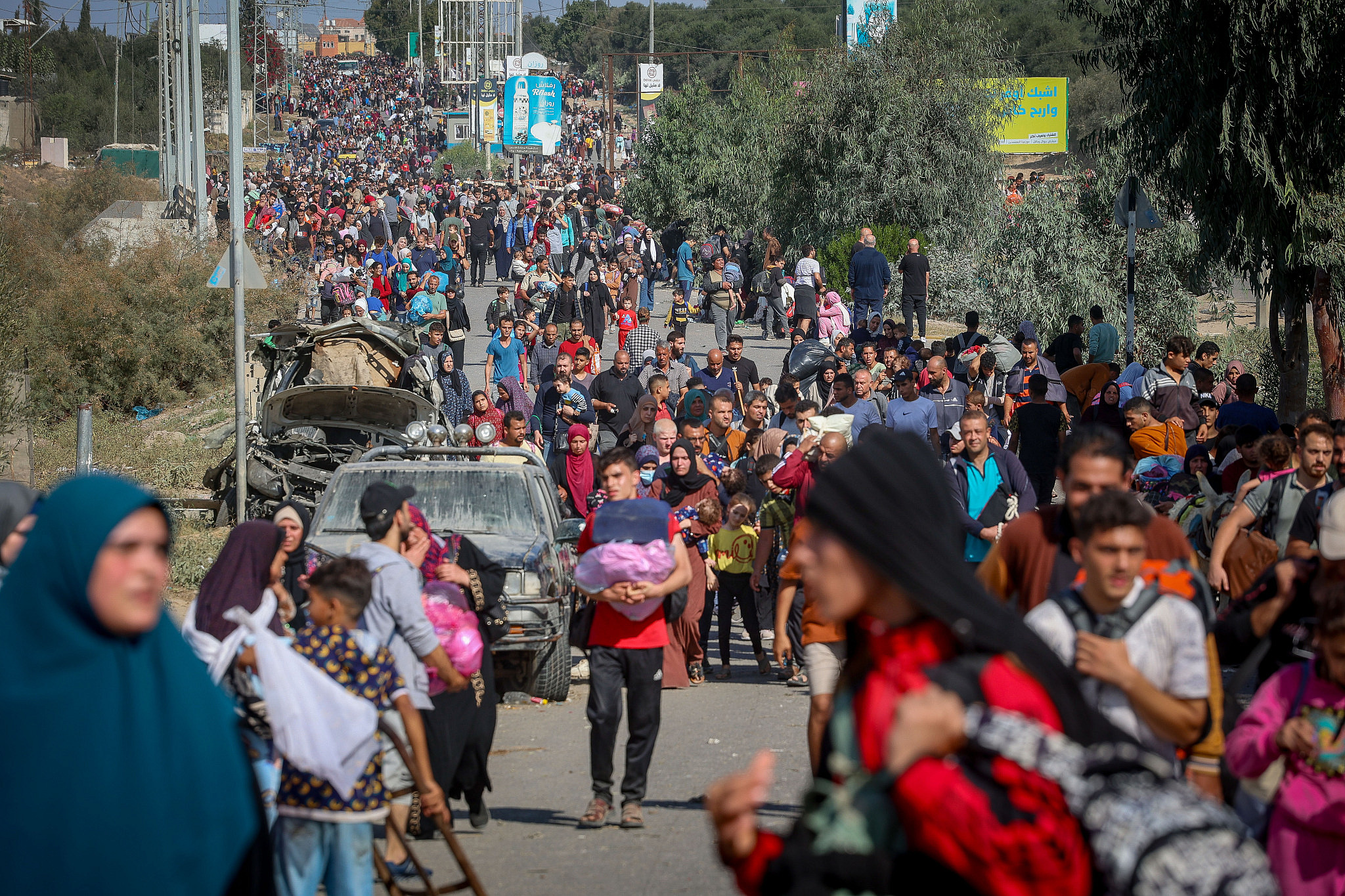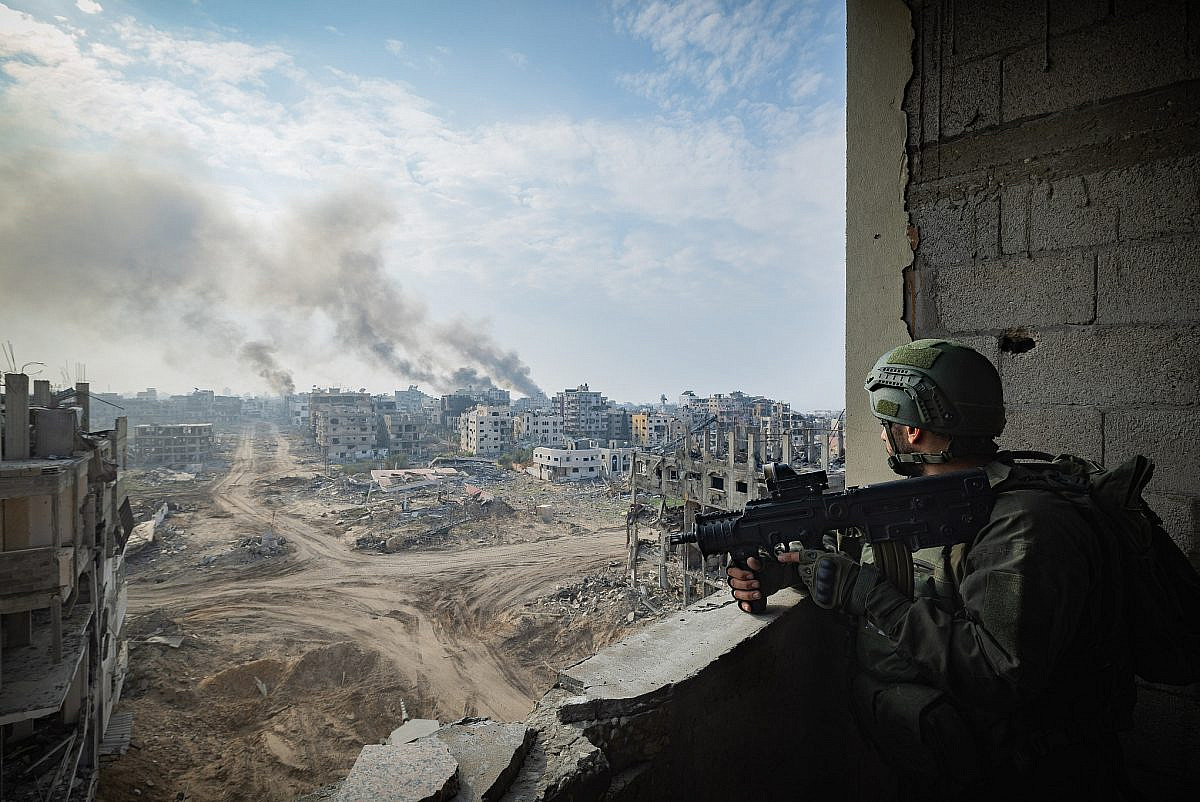In early December 2022, shortly before Israel’s far-right government was sworn in and long before the horrendous events of October 7 and Israel’s ongoing brutal assault on the Gaza Strip, Ameer Fakhoury and I published an article on these pages entitled, “Why the ‘second Nakba’ government wants to remake the Israeli state.”
Our concern that this government would carry out an expulsion modeled on the mass dispossession of the 1948 Nakba was based on the fact that Bezalel Smotrich and Itamar Ben Gvir had been given central roles in the government — Smotrich as finance minister and de facto West Bank overlord, and Ben Gvir as national security minister. This duo, we wrote, desire chaos, believing that this “will lead to the decisive moment in which Palestinians either come to heel or are expelled.”
One year on, our worst fears have come to fruition: 1.9 million of the Gaza Strip’s 2.2 million Palestinian residents are currently displaced from their homes — which in many cases have been totally destroyed — and senior Israeli government figures are openly touting, and actively working toward, mass expulsion from the besieged enclave.
In recent days, Smotrich has laid out his vision for the Strip in clear terms. “My demand is that Gaza not continue to be a hotbed where 2 million people grow up on hatred and aspire to destroy the State of Israel,” he said in an interview with army radio last week. “If there are 100,000 or 200,000 Arabs in Gaza and not 2 million, the whole discourse about the day after will be different.”
At a meeting of his Otzma Yehudit (Jewish Power) faction in the Knesset on Jan. 1, Ben Gvir called for “encouraging the migration of the residents of Gaza” as the “correct, just, moral, and humane solution,” and echoed Smotrich’s call to reestablish Jewish settlements in the Strip. This comes after two Knesset members from Netanyahu’s Likud party published an article in the Wall Street Journal in November titled “The West Should Welcome Gaza Refugees.”
Netanyahu himself told members of his Likud party last month that Israel is “working on” facilitating the so-called “voluntary migration” of Gaza’s Palestinians, while another party member, Agriculture and Rural Development Minister Avi Dichter, explicitly described the army’s current operation in the Strip as “Nakba 2023.”

And, as +972 and Local Call revealed in full at the end of October, Israel’s Intelligence Ministry has recommended the forcible and permanent transfer of Gaza’s entire Palestinian population to the Sinai Peninsula. Egypt, for its part, still maintains that it will not acquiesce to any transfer of Palestinians into its territory.
There is nothing new about Israeli politicians using the threat of the Nakba as a political tool; indeed, Fakhoury and I published another article in June 2022 entitled, “How threats of a second Nabka went mainstream,” which detailed how the Israeli right has shifted in recent years from denying the Nakba to justifying it and wielding it as a renewed threat against the Palestinians. Now, however, this threat has transformed from a rhetorical strategy into a devastating reality.
A ‘strategic weapon’ — and an end
The Israeli army’s declared goal in Gaza is to incapacitate Hamas and other Palestinian armed groups. Its actions over the past three months, however, attest to a far broader campaign resembling policies of Nakba: expelling civilians en masse and rendering their homes and neighborhoods uninhabitable.
Within days of the Hamas-led rampage in southern Israel, the Israeli military ordered 1.1 million Palestinians residing in the northern half of the Strip to abandon their homes and move south of Wadi Gaza until further notice — while still bombing the areas to which they were told to flee. More recently, the army has given further expulsion orders to Palestinians in various parts of southern Gaza, pushing hundreds of thousands toward the coast and Gaza’s border with Egypt.
The editor-in-chief of Israel’s liberal Haaretz newspaper, Aluf Benn, argued that expulsion is “Israel’s main strategic move” in the war, and the army’s ability to kill civilians who try to return home will be key to Israel’s victory. The newspaper’s Middle Eastern affairs analyst, Zvi Bar’el, similarly described the humanitarian crisis that Israel has induced in Gaza as a “strategic weapon” designed “to sear into Palestinian consciousness the apocalyptic punishment facing anyone who from now on dared challenge Israel.”

Not only does Israel see forcible displacement as a tool, it also appears to see it as an end in itself. Testimonies and documentation that have trickled out of Gaza throughout this period, in addition to the analysis of satellite imagery, suggest that the Israeli army is making sure many of the people it has displaced will have no homes to return to.
The army has leveled entire neighborhoods, damaging or destroying approximately 70 percent of Gaza’s homes. It has destroyed libraries and archives, municipal buildings, universities, schools, archeological sites, mosques, and churches. Even if Israel doesn’t ultimately force a mass expulsion of Palestinians out of the Strip, precious little will remain from their lives before this war.
“Israel has no interest in Gaza being rehabilitated,” Giora Eiland, the former head of Israel’s National Security Council, said on Israel’s national broadcaster, Kan, in November. “Is a situation of ongoing chaos in Gaza, similar to Somalia, a situation that Israel can live with? Israel can live with it. Whoever wants to change that can do so on our terms.”
Beyond the moral depravity of the very idea of deporting or killing 2 million people, the flourishing of the “Nakba camp” in Israeli politics testifies to the ideological poverty of Israeli society. Seventy-five years after the state’s establishment, the only thing that Jewish-Israeli politics has to offer is a second Nakba.
Returning to 1948’s foundational military and political strategy, to that same method of mass deportation of an entire people, demonstrates the instability and weakness of the other methods Israel has suggested for dealing with the “Palestinian question” over the years: annexation, maintaining the status quo, unilateral disengagement, “shrinking the conflict,” and even two-state solution proposals centered primarily around Jewish interests.
Moreover, the prominence given to “the Nakba option” in contemporary Jewish-Israeli political discourse further testifies to Israel’s exceptionality in today’s world. After World War II, and despite some cases to the contrary, the international consensus largely deemed forced population transfer and mass expulsion no longer legitimate, even designating them as grave international crimes.

Even when these tactics have been put to the test more recently, such as in Bosnia or Rwanda, hardly any state has dared to declare it as official policy, and the international community — even if sometimes acting atrociously late — has generally worked to end their use. But expelling Palestinians from their homes and preventing their return is Israel’s oldest policy, and its leaders are primed to put it into action once more.
At the edge of the abyss
October 7 was a moment of crisis unlike anything Israel has seen for half a century, or perhaps even since 1948. Israel’s national security crumbled, along with the personal sense of security of many of its citizens. The viciousness of the Hamas-led attacks aroused a deep desire for revenge; indeed, most of the Jewish public views living by the sword as the most reasonable option.
But it is still worth remembering: the Nakba of 1948 didn’t resolve the conflict between Jews and Palestinians. Seventy-five years later, Israel is fighting the grandchildren and great-grandchildren of the Palestinian refugees who fled or were expelled to Gaza in 1948 from their lands inside what became the State of Israel.
Now, Israel is making its fantasy of enacting a second Nakba into reality, intoxicated with its own power and military advantage over Hamas, and effectively greenlit by the legitimacy that the international community has granted Israel to “respond” after October 7. But Israel may sober up sooner than expected.
A complete “cleansing” of the entire Gaza Strip appears to be an impossible mission: Hamas won’t surrender, Palestinians won’t raise the white flag, and the humanitarian crisis would likely lead to Arab, American, and European intervention. The question of the fate of the remaining Israeli hostages in Gaza may also complicate an unambiguous course of action, while domestic Israeli politics is much less cohesive than ubiquitous performances of patriotism may suggest.
Most read on +972
If Israel does eventually sober up, how will it change course? One can hope that, unlike in previous cases, perhaps this time Israeli society won’t simply return to the absurd idea of “managing the conflict.” One can hope that, especially after experiencing such a terrible trauma, Israeli society will begin to understand that a secure future in this land can only be guaranteed by coming to some sort of agreement with the Palestinians — and that coercion, violence, and supremacy will never achieve this.
Jews and Palestinians are closer today to the abyss than we have been for 75 years, and Israel’s embrace of a full-blown Nakba solution could cast us all into it. But it is also important to remember: when you stand at the edge of the abyss, it is still possible to glimpse the other side.
A version of this article was first published in Hebrew on Local Call. Read it here.






